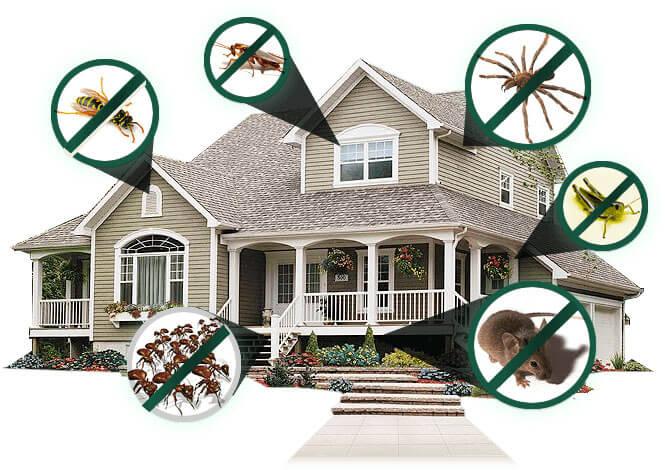A1 Bed Bug Exterminator Charlotte - Specialized Bed Bug Removal
A1 Bed Bug Exterminator Charlotte - Specialized Bed Bug Removal
Blog Article
Bed Insect Therapy Malfunction: Contrasting Chemical Vs. Non-Chemical Solutions
In the world of pest control, particularly when managing the relentless problem of bed insects, the selection between chemical and non-chemical therapy options can be a critical one. Both methods provide unique advantages and drawbacks, influencing variables such as efficiency, safety factors to consider, and general cost. By taking a look at the nuanced information of each method, a clearer understanding of which path to pursue in resolving a bed pest invasion can be attained.
Efficiency of Chemical Treatments
Chemical treatments for bed insect problems have been commonly acknowledged for their quick and potent effectiveness in getting rid of these parasites. When considering the effectiveness of chemical therapies, it is critical to understand that they can give a thorough and fast remedy to a bed pest trouble. Expert exterminators usually rely upon pesticides to target bed bugs at different stages of their life cycle, consisting of grownups, eggs, and fairies. These chemicals usually work by interrupting the bed insects' nerves, leading to paralysis and ultimate death.
Furthermore, chemical treatments have the advantage of using residual impacts, indicating that they can proceed to eliminate bed pests also after the preliminary application. This residual activity is specifically beneficial in combating any prospective re-infestations. Furthermore, the rapid activity of chemical treatments can bring alleviation to individuals facing severe bed insect infestations, permitting them to regain control of their space swiftly.
Security Issues With Chemical Solutions
One important aspect that needs mindful consideration when utilizing chemical solutions for bed bug treatment is making certain the safety and security of residents and the environment. Direct exposure to particular chemicals made use of in bed insect therapies can lead to respiratory system concerns, skin irritability, or various other negative reactions, specifically in people with pre-existing problems or sensitivities.
In addition, the ecological effect of chemical services is an additional substantial consideration. Some pesticides utilized in bed insect treatments may be dangerous to helpful insects, wildlife, and ecological communities if they seep into the dirt or water supply. It is vital to make use of chemical treatments deliberately, complying with safety standards, and thinking about much less hazardous choices to alleviate these risks and make sure the safe and efficient administration of bed pest invasions.
Benefits of Non-Chemical Techniques
Taking into consideration the possible safety and security concerns and ecological effect connected with chemical remedies for bed bug treatment, exploring non-chemical techniques presents an encouraging alternative with several distinctive advantages. Non-chemical approaches provide a more secure choice for houses, particularly those with kids, pets, or people conscious harsh chemicals. These methods get rid of the dangers of exposure to poisonous substances, lowering the possibility for damaging health impacts. Additionally, non-chemical treatments are environmentally friendly, as they do not add to air or water contamination, making them a sustainable choice for pest control.
In addition, non-chemical options can be efficient in targeting bed insects, consisting of hard-to-reach locations where chemical treatments may not penetrate - A1 bed bug treatment in charlotte. Methods such as warm therapy, vacuuming, steam cleaning, and bed mattress encasements provide extensive removal without the use of unsafe chemicals.
Limitations of Non-Chemical Treatments

In addition, non-chemical therapies official site frequently require numerous applications to attain effective find more information removal. This can be lengthy and might not always assure total removal of all bed insects and their eggs, particularly in hard-to-reach or concealed places.
In addition, the success of non-chemical therapies greatly relies upon appropriate pest control franchise execution and thoroughness, which can be challenging for individuals without specialist experience. Poor application of non-chemical methods may lead to incomplete eradication, leading to persistent problems and the need for extra treatments.
For that reason, while non-chemical therapies have their benefits, it is crucial to acknowledge these limitations and consider them when determining one of the most reliable strategy for handling bed insect invasions.
Cost Comparison: Chemical Vs. Non-Chemical Options
Given the constraints connected with non-chemical therapies, an important aspect to review in the context of bed pest management is the expense contrast between chemical and non-chemical options. Chemical therapies normally include the application of insecticides by experts, which can range from $250 to $900 per area, depending on the extent of the problem and the dimension of the area to be treated. In comparison, non-chemical therapies like warmth treatment or vapor can be a lot more costly, with prices ranging from $1,000 to $6,000 for a whole home. While the first price of chemical therapies might appear reduced, numerous treatments might be called for to fully eliminate the invasion, potentially raising the total cost. On the other hand, non-chemical options might supply a much more green and lasting remedy, although they can be cost-prohibitive for some people. Inevitably, when taking into consideration the cost of bed insect treatment choices, it is necessary to weigh the in advance costs against the effectiveness and long-term sustainability of the picked approach.
Final Thought

Considering the possible security issues and ecological effect linked with chemical remedies for bed bug therapy, discovering non-chemical approaches presents an encouraging choice with a number of unique advantages.Offered the limitations associated with non-chemical therapies, an essential facet to review in the context of bed pest administration is the price contrast between chemical and non-chemical choices. In contrast, non-chemical therapies like warmth treatment or steam can be a lot more costly, with prices varying from $1,000 to $6,000 for a whole home. While the preliminary cost of chemical treatments might appear lower, several treatments may be needed to completely remove the infestation, possibly boosting the overall cost.In verdict, when comparing chemical and non-chemical bed bug treatment alternatives, it is vital to consider performance, safety, benefits, constraints, and expense.
Report this page